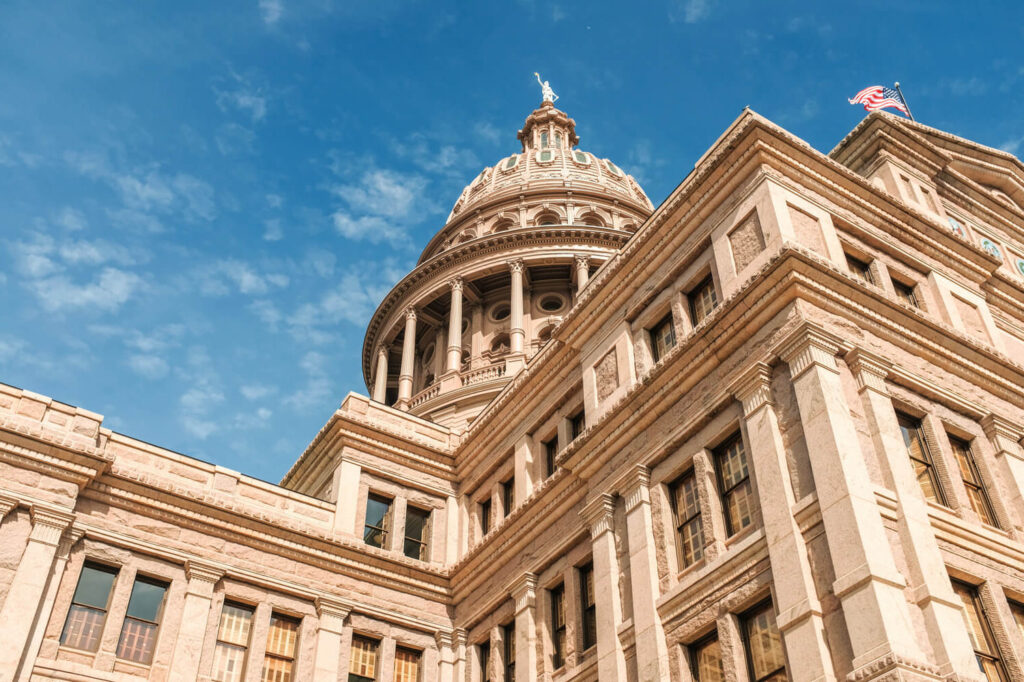The Legacy of Overton Park
How a monumental 1971 decision put the Establishment in its place—and left a broken public sector in its wake
- By Marc J. Dunkelman

For decades, progressives have viewed the tug-of-war between left and right as one fundamentally focused on the size and power of government. Believing that the public sector, whether at the national, state, or local level, is inefficient and antagonistic to the interests of capital, conservatives have purported to pare back public authority. Those of us on the other side, convinced that the private sector too frequently leaves the poor and working class behind, generally support government’s playing a robust role. Setting aside how the public sector works, we typically want it to do more, while they want it to do less.
If this view is right in the main, it obscures an essential nuance. As much as progressives may think they hold a torch for more robust public authority, for decades we’ve actually carried a banner for paring it back. It’s not that conservatives should be absolved for the damage they’ve done by throwing various wrenches in the works. But Democrats need to grapple with how, fearing that powerful figures may do harm, they’ve erected checks on power that prevent anyone from doing good.
Public authority is broken today. Esteem for the government has fallen to near-record lows. And that’s in no small measure because progressives themselves have rendered public authority incompetent. Today, as we think in the aftermath of the disastrous 2024 election about how to push forward, particularly at the state and local level, we need to understand how the present catastrophe came to be. So, let’s return to the scene.
In 1971, when the Supreme Court released its landmark decision in Citizens to Preserve Overton Park v. Volpe—stating that “the Secretary of Transportation may not authorize use of federal funds to finance construction of highways through public parks if a ‘feasible and prudent’ alternative route exists”—the president of the Sierra Club compared the moment to the nation’s military victories at Yorktown and Gettysburg. As he put it, this was “the first place where individual citizens used the law to stop the state and federal highway building and all the money and power behind them.”
To that end, the nation’s judiciary, speaking in this case through the pen of Justice Thurgood Marshall, was arising at long last to meet the great threat of the day, namely the monstrosity of the so-called Establishment.
This was the general consensus at the time, at least among progressives. The New York Times editorialized that Marshall’s majority opinion in Overton Park v. Volpe was “good news for cities across the country that are still contending with the mania of those who would sacrifice the serene values of a green parkland to frenetic movement through a concrete wasteland.” Three years before the publication of The Power Broker, Robert Caro’s legendary jeremiad against developer Robert Moses, the wisdom of Jane Jacobs’s worldview—the notion that urban landscapes needed to be preserved and protected—was coming into fashion. The courts became the tool Jacobs’s acolytes used to keep the highwaymen in their place.
Memphis’s city fathers, however, were aghast at Marshall’s decision—as were their peers in states and municipalities across the country. After all, they had been the ones who chose to build an interstate through Overton Park, their city’s answer to New York’s Central Park. And they bristled at the Supreme Court’s notion that their discretion should be curtailed. At core was the question of who should make big decisions about a community’s transportation infrastructure. And they were convinced that they themselves knew best.
In the decades that preceded Nixon’s presidency, decisions relating to the public interest had been concentrated in the hands of those viewed as the elite—elected officials, corporate brass, university administrators, senior clergy, chamber of commerce executives, and others who represented the traditional Establishment. They had decided that Memphis needed to construct a central artery connecting the region’s eastern suburbs to its downtown by car, lest the central business district wither. The problem they had been forced to confront was where to put this stent. And they had used their discretion to weigh the choices, picking what they deemed to be the best option.
It wasn’t an entirely obvious decision, and all the options came with various costs. Between the leafy suburbs east of downtown and the central business district were other well-to-do neighborhoods, many of them peppered with beautiful homes and historic buildings (Rhodes College, for example, and the tony neighborhood of Belleair Woods). Where could Memphis site its new expressway—an extension of the I-40 corridor running from North Carolina to California—with a minimum of disruption to existing homes and businesses? The answer, when looking at a map, was fairly clear: Build the road through Overton Park, the crown jewel of Memphis’s parks system, home of the zoo, the half-shell, and more.
To be clear, within Memphis, this idea was hardly controversial. Almost everyone agreed that the city needed this new expressway if the region was going to keep up with other American metropolises. And almost everyone agreed that the least destructive or obtrusive means of speeding the commute from the suburbs to downtown would require a small sacrifice, namely condemning 26 of the park’s 342 acres of greenery.
But “almost everyone” didn’t include every single resident. Organized primarily by a firebrand civic activist named Anona Stoner, protesters began agitating against the project. It would be too destructive, they said. The park should be considered sacrosanct. Expressways were too disruptive. Leave Memphis’s crown jewel alone.
This dynamic—the city fathers all agreeing on a way forward, a small band of opponents outraged by their collective wisdom—was hardly new to municipal life in America. Proposals to bring major changes to the physical landscape had frequently prompted some cheerleading and doom-mongering alike.
But to that point in American municipal history—or, at least in the several decades leading up to the late 1960s—city fathers had typically gotten their way. For that reason, urban expressways were being carved through metropolitan areas nearly everywhere.
From the beginning of the interstate highway program a decade and a half earlier, there had been fights about which interstates would be constructed and where. (At the outset, many worried more about being bypassed than being bisected.) But because city fathers had nearly always had their way, Stoner’s opposition initially appeared as little more than an irritation, a gnat that Memphis’s great men would have to slap away. In this case, however, Stoner had what amounted to a secret weapon: In 1966, just a few years earlier, a little-known provision designed to protect public greenery had been buried as section 4(f) of the bill creating the new federal Department of Transportation. The so-called Yarborough Rule would be her trump card.
Section 4(f) had been created explicitly to address a situation analogous to the problem Memphis was facing, but with a decidedly light touch. City fathers in San Antonio had wanted to do essentially what Memphis was doing—build a road connecting the metropolitan area’s central business district with the airport north of the city through that city’s crown jewel, Brackenridge Park. But much as Texas’s liberal Senator Ralph Yarborough had wanted to save Brackenridge Park, his peers in the Senate were not prepared to prohibit highway engineers from doing what they thought best. And so, even while Yarborough succeeded in getting language inserted encouraging engineers to avoid parkland as section 4(f) of the bill, an accompanying Senate report included the following passage:
[4(f) was not intended to issue] a mandatory prohibition against the use of the enumerated lands, but rather, a discretionary authority which must be used with both wisdom and reason. The Congress does not believe, for example, that substantial numbers of people should be required to move in order to preserve these lands, or that clearly enunciated local preferences should be overruled on the basis of this authority.
The Memphis City Council had already voted 4–1 in favor of the route through Overton Park. The mayor supported the plan. The governor was on board. Yet it was on this thin reed—a provision of a bill passed with accompanying language explicitly dispelling any notion that it might be used to limit local discretion—that Stoner and her supporters filed a lawsuit challenging the federal government’s participation in Tennessee’s plan to drive asphalt through Memphis’s crown jewel. Few expected her to succeed.
Two things, at this juncture, need to be made clear. First, although the interstate highway program, funded in 1956 by a bill signed into law by President Dwight Eisenhower, was explicitly federal, the real power behind the program was state and local. State and local engineers, using federal guidelines, selected where interstates would be constructed. Washington had erected the program to empower the Establishments of individual American communities.
Second, by the late 1960s, public esteem for that very Establishment was waning on nearly every front. It wasn’t just that the public had begun reacting with increasing revulsion to the impacts of various urban expressways, which often left paths of destruction through vibrant working-class and minority neighborhoods. They had also come to conclude, correctly, that “urban renewal,” better known as slum clearance, had worked to the same horrific effect.
The Establishment had also sent the country into the quagmire of Vietnam. It had allowed birth-defect-inducing pesticides to be sprayed on crops. It had permitted car companies to sell automobiles that were, in Ralph Nader’s famous phrase, “unsafe at any speed.” And so, the sentiment that had girded the interstate program—that is, to empower the Establishment to do more—was being supplanted by a desire to pare back its authority.
That was the impulse fueling passage of the Yarborough Rule, watered down though it may have been, as well as various legislative efforts to preserve historically significant buildings, to require environmental reviews of federally funded projects, and to demand that communities have an opportunity to opine on projects before local and state authorities finalized any plan. By the late 1960s, a progressive movement that had, a generation earlier, seen experts and officials as a salve for the paralysis and parochialism of political machines and hack politicians, viewed many of them with disgust. The Establishment became to the progressive movement what the monster had been to Frankenstein. And so, progressives themselves were looking for any tools at their disposal to bring public authority to heel.
The lawsuit filed against the plan to extend I-40 through Overton Park appeared laughable at first. Most observers figured that judges, tasked with interpreting the law, would simply read that Senate report language and understand that Congressional intent was never to steal decision-making power away from the city fathers who supported the project. Moreover, the only alternatives—to move the highway north or south of the park, and therefore destroy homes, small businesses, and even a university campus—were significantly less appealing. So no one was surprised when Stoner’s suit lost at the district court level, and then again when it was appealed to a circuit court in Cincinnati.
When the Supreme Court agreed to hear a further appeal, however, many took notice. The Court, which in the aftermath of the 1968 election was almost unquestionably the most progressive of the federal government’s three branches, was revealing itself to be increasingly sympathetic to the movement’s desire to put the Establishment back in its place. And so, Justice Marshall’s opinion, which was joined by six of his colleagues, entirely disregarded the Senate report language and imbued 4(f) with power even Senator Yarborough could not have imagined. As Marshall wrote:
It is obvious that in most cases considerations of cost, directness of route, and community disruption will indicate that parkland should be used for highway construction whenever possible…. The statute indicates that protection of the park land was to be given paramount importance.
The result, in Memphis, was a stunning victory: Stoner, the proverbial David, had effectively slayed the Establishment’s Goliath. And it was through that lens that the Sierra Club and the New York Times editorial board chose to contextualize the fight. Progressives around the country interpreted the scrap over I-40 and Overton Park as a battle between the Establishment’s environmentally disruptive engineers and the scrappy protesters protecting the public interest. Through that frame, the ruling marked nothing less than the triumph of good over evil.
Whatever anyone’s view of whose side the angels sang on—it’s hard now to vilify those who simply wanted to save a beautiful park—Overton Park encapsulated a much broader tug-of-war. The expansion of public interest law, changing views inside the judiciary, and the broad reorientation of progressivism to oppose the Establishment had a composite effect that’s largely been overlooked: The municipal officials and others at the state and local level who had once had a free hand to decide important issues like whether and where a road should be constructed were stripped of their discretion. The courts were used as tools to diffuse their power so that activists and public interest lawyers could intervene.
Overton Park, then, was just one episode in a litany that saw centralized power carved into little pieces. In some cases, that power was diffused through outright restrictions like 4(f); in other cases, by study requirements, as mandated by the National Environmental Policy Act (NEPA); and in still others, by process mandates, like those in charter revisions creating community boards in New York City and elsewhere. From one circumstance to the next, the details were different. But in nearly every instance, the underlying thrust was the same: Power centralized in the hands of Establishment figures needed to be returned to the people.
Even then, many worried about the impacts. Tennessee’s Democratic and Republican power brokers alike would spend the next several years fighting to have the highway plan restored, but to no avail; to this day, Memphis marks the only break in I-40’s path across the country. And many still believe that’s all for the good: Stoner managed to save a park from demolition, and America’s obsession with automobiles, traffic, and pavement was dealt an important blow. We’ll never know for sure how many additional parks were saved because engineers interpreted Marshall’s ruling to mean they would never win the license required to build any sort of transportation in a public green space.
That said, the more significant impact of the ruling and the broader zeitgeist shift it represented is less well understood. Progressives, having come to fear the Frankenstein’s monster they’d created in the form of the Establishment, effectively neutered the government with shifts in jurisprudence and policy. Whatever power the city fathers wielded—to the extent that progressives believe they were ever able to do any good—lay in their ability to decide, in the discretion they had to choose what would be built and how and when and for how much.
The revolution that Overton Park engendered unquestionably narrowed the authority of city fathers to make decisions going forward—but it never suggested any clear alternative mechanism for choosing between competing options. Ideally, “the public” would decide—but, of course, the public rarely speaks with one voice on topics like this. “The people” invariably disagree among themselves. This paved the way for a scourge in the realm of state and local policymaking: Absent anyone having discretion, how much could be accomplished?
More than half a century later, with America’s infrastructure standing as a monumental embarrassment on the world stage, we have a clear-cut answer: Not much, and certainly not enough.
About The Author
Marc J. Dunkelman is a fellow at Brown’s Watson Institute. A longtime Democratic aide, he is the author of Why Nothing Works and The Vanishing Neighbor, and his work has appeared in the New York Times, Washington Post, Wall Street Journal, and Atlantic.



